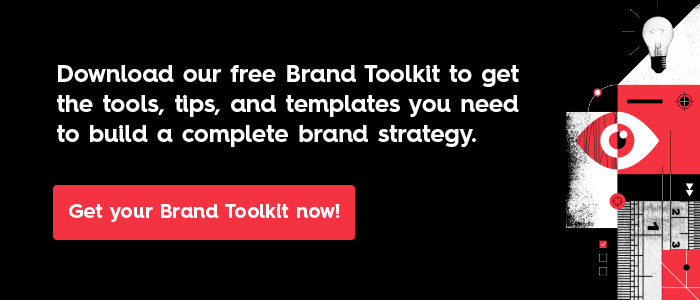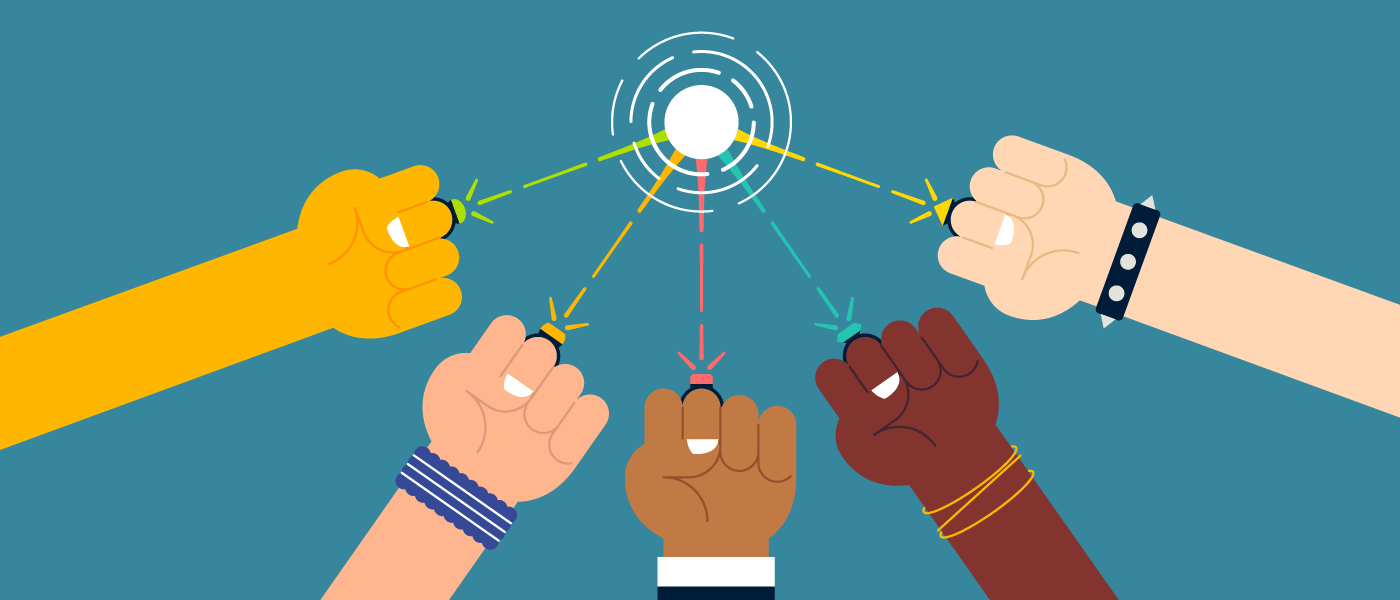A brand is a precious thing. No matter how big or small, it is the essence of a company—and it should be treated with care. It needs to be nurtured, fed, and looked after like the living, dynamic entity it is. But in the day-to-day operations of running a business, thinking about the “brand” can easily be back burnered.
In many companies this is the constant state:
- The marketing team is busy pushing content out the door.
- The sales team is busy closing deals.
- The accounting team is too focused on making sure everyone’s getting paid.
Even those that do have the knowhow and foresight to care for the brand are pushed to focus on the here and now. But for a brand to grow and thrive, someone must actively take the reins.

In many organizations, people assume everyone is looking out for the brand—therefore no one is. Who helps ensure quality and consistency? Who connects brand vision to business strategy? Who promotes and shares brand values across the organization? That’s why a dedicated brand team is crucial. You need someone to put the brand front and center, to make sure your operations are aligned to your long-term brand goals.
What Does a Brand Team Do?
A brand team is not just focused on fonts and color use. Its job is far more expansive. A strong brand team functions like an internal agency; their work extends to every other department.
They work to bring the brand to life at every level of an organization, whether it’s advising leadership, guiding marketing, collaborating with HR, or demonstrating brand values through everyday interaction. A brand team takes a holistic approach to building a brand—but they do it with laser focus (think of them as brand navy seals). Mostly, they focus on five main duties.
1) Aligning the Business to Brand Goals
Every business decision affects your brand in some way, whether it’s related to your financial situation or reputation. Yet the brand is often an afterthought when major decisions are made by higher-ups—even though leadership should be the most in tune with the brand.
With a brand team, however, you can make more intelligent decisions that support your long-term brand goals. A brand team can help you better define and justify why a business decision will help (or hurt) the brand. They can also offer valuable perspective on how it might be implemented, identify potential challenges you might face, and help craft a plan of execution to make sure everyone is fully on board.
2) Promoting the Brand
In many organizations, a brand team and marketing team are synonymous. But marketing and content strategy are really just tools to execute the larger brand strategy. It’s the brand team that helps shape that strategy, then collaborates with marketing to determine the most effective way to promote the brand.
3) Cultivating a Culture that Reflects Brand Values
A good brand acts on its values every day—beyond what it delivers to its customers. You may offer amazing customer service, but if your culture is toxic or your practices unethical, you can’t sustain. A brand team provides a valuable service in helping to shape the company culture in ways that support the brand.
For example, if giving back to the community is a brand value, a brand team might collaborate with HR to create a stipend or designate time off for volunteer work. If eco-consciousness is a value, the brand team might create content about how the company implements this philosophy in the manufacturing chain, thus demonstrating transparency and cultivating trust among employees.
And, of course, a brand team is the epicenter of the brand, so it is their duty to demonstrate brand values in all interactions with fellow employees. If the brand team is not talking the talk or walking the walk, how can you expect anyone else to?
4) Preserving Brand Identity
Communication plays a huge role in how brands express themselves. It is how the brand looks, feels, sounds, and interacts that shapes outside perception. Therefore, the brand team must be the guide and guardian of the brand identity.
This involves collaborating with the creative team or agency to create a strong visual and verbal identity, as well as communicating how that identity should and shouldn’t be used. (This is especially important if you are creating a lot of content, working in multiple mediums, or working across offices with a mix of in-house creators, freelancers, or agencies.)
The brand team is responsible for creating, enforcing, and revising brand guidelines, as well as holding postmortems to review and measure adherence to brand standards.
5) Sharing Brand Knowledge
As Marty Neuemeier notes in The Brand Gap, one of the most common issues that plagues brands is “evaporation,” or the loss of knowledge. When the people with the knowledge needed to guide and protect the brand leave (the average CMO’s tenure is only 44 months), each new generation inherits the brand, but oftentimes their knowledge is diluted. Therefore, business decisions stray from brand values.
A good brand team is equipped with the knowledge and ability to not only guide brand decisions but educate the next generation.
How to Assemble a Good Brand Team
Even if you have a brand team, it must be the right brand team. In some organizations, a brand team can be so dictatorial that they end up hurting the brand. With an overly aggressive “brand police” force, no one wants to get punished or called out for violating the brand, so employees go rogue or tiptoe around to avoid confrontation. The result? The brand becomes even more diluted.
So how do you cultivate that balance? How do you ensure your brand is cared for without being overly precious? You need the right people in the right roles, united by the same goals.
When we talk about roles, we aren’t talking about positions. You don’t have to hire a new person to fill every role on your brand team. You just need to make sure that every role is covered by someone in the department. Even a small team can take the reins and create something great—if roles are properly allocated.
6 Roles You Need on Your Brand Team
Depending on your team size, you may mix and match these roles. Your marketing designer may function as creative director, and your founder may fill in as chief marketing officer. Just make sure you have these essential roles covered.
1) Chief Brand Officer
The CBO is the ultimate brand-keeper, the one who is accountable for shepherding the brand, bridging the gap between brand and business, consulting higher-ups, and ensuring that marketing goals are aligned with the brand’s strategy. They are there to ask questions, poke holes, raise red flags, and challenge leadership when necessary.
As organizations begin to realize the value of branding, the position of CBO has become more prominent, whether in proper title (e.g., the CBO position in a large global organization) or in role (e.g., a CMO can play CBO). This is a powerful and important position, but not every brand needs or can afford a single dedicated CBO. What most startups and mid-level brands need is a person or team who can perform the function.
A caveat: Sometimes these individuals rule with an iron fist, making it difficult or intimidating for everyone else to feel ownership over the brand. You need a CBO who is willing and able to empower those around them. (Note: Although a CBO is the high-level overseer, brand stewardship is in the hands of every employee, as everyone from your creative director to your accountant represents the brand.)
2) Chief Marketing Officer
Marketing is an essential element of branding, and it can either support and reinforce your brand or lead you way off course. A CMO (or a marketing manager in some organizations) is there to craft marketing strategy, oversee content creation, coordinate teams and resources, and basically handle anything and everything related to marketing—or find the person who can. In smaller organizations a CMO and CBO may be one in the same. In others, they may work closely together to make sure strategies are aligned.
3) Creative Director
Any piece of content you create, from your employee manual to your brand videos, reflects your brand. Brand guidelines help you determine how your identity is communicated, but you need someone to approve or monitor the quality of content.
This task often falls to your creative director, as they are usually involved in your creative projects, but anyone can fill this role. The most important responsibility is overseeing the brand guidelines, including the verbal and visual identity. That means collaborating with content makers, the CBO, CMO, and other relevant stakeholders to ensure that the brand identity truly reflects brand goals.
Most importantly, a creative director should not only enforce the guidelines but empower everyone to apply them correctly. (Don’t have brand guidelines? Follow this guide to create them.)
4) People Ops Rep
This person’s job is basically to be a culture ambassador. A good rep is a people person who is invested in creating a happy, healthy, fulfilling workplace. They may be a little more extroverted and social, or they may be more introverted and focused on how to integrate brand values into the larger company organization. What matters is their ability to find unique and creative ways to help the company walk the talk, promote brand values, and bring those sometimes abstract constructs into day-to-day interactions.
If a culture ambassador does their job well, they help you both grow your brand and attract the type of people who will be willing and active participants in building the brand.
5) Brand Analyst
This person’s job isn’t always the easiest, but it’s crucial. They support the CBO and CMO by translating the brand strategy into measurable metrics, then extracting insights, reporting results, providing recommendations, and identifying new opportunities for improvement. This is a tremendously valuable role to help the brand team grow, whether it’s justifying additional budget or promoting the success of a recent initiative.
6) Communications Lead
This role is simple: to document information, build the brand library, and educate anyone who may need to know that information, whether it’s a new employee, new CEO, or new freelancer. Their job is to make sure everything is up to date, easily accessible, and translated into language that is easy to understand.
For example, a communications officer may help HR draft a company-wide email explaining the details of the new employee program, assist the creative director with building or updating the brand guidelines, or collaborate with the CMO to oversee content creation.
No Matter What, Put Collaboration First
As you build your team, there are likely to be disagreements, hiccups, and challenges—just like any group endeavor. But you can do a lot to alleviate those by learning to work as effectively as possible. A few tips to help you do that:
- Craft a strong brand strategy together (if you haven’t already).
- Learn how to work with the 4 types of creative thinkers.
- Follow these tips for better brainstorms.
- Try these exercises when you feel creatively stuck.
But if you just don’t have the bandwidth to build your own team, let’s chat about how we can help.







I appreciate your balanced and in-depth technique to this topic.
Happy to help bring any insight.
Help me brand my car wash
Feel free to reach out here: https://columnfivemedia.com/contact
That was some gold in there. Very Appreciated!
Happy to help!